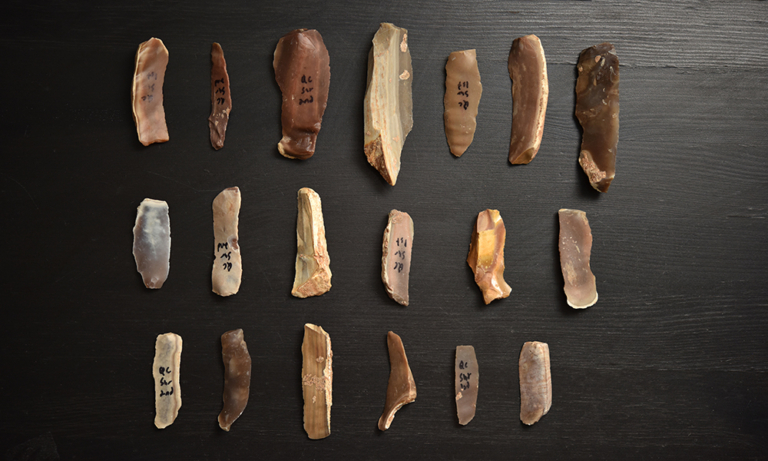Although it may appear tangled, Ruthie Kaplan’s career has followed a natural trajectory. She fell in love with buildings and urban studies at Technion–Israel Institute of Technology, becoming an architect and working in the field for nearly five years. After the birth of her children, Kaplan started toward a design degree, majoring in weaving at Shenkar College. She was drawn to the craft because as a child she had been fascinated by the stories of her grandmother, who came from a family of weavers, and because, like architecture, weaving revolves around structure and planning. But when Kaplan learned more about her family’s roots in the textile industry in Lodz — a manufacturing city in central Poland — she shifted focus again.
Supported by an Azrieli Graduate Studies Fellowship, Kaplan returned to Technion for a master’s in urban design. Now, coming full circle, she is a PhD candidate in the University of Haifa’s Department of Jewish History, where, with another Azrieli Graduate Studies Fellowship, she is exploring how Jews influenced and were influenced by the urban landscape of Lodz between World War I and World War II. Using tax records, an archival address book, memoirs and oral histories, she is both mapping where Jews lived and painting a picture of their daily lives. As a member of the university’s eLijah digital humanities lab, she is also digitizing some of these documents so future scholars will have a trail to follow.
While Kaplan’s project will continue into 2024, she has already discovered that perceptions of interwar Lodz do not reflect the full reality: though segregated in some ways, the city’s fabric was sewn together by residents with different religious and ethnic backgrounds. “In light of the unstable political contexts, growing waves of refugees and multicultural challenges cities around the world are facing,” she writes in a 2021 paper, “the connection of a place to the identity of its residents is currently of more importance than it ever was.” Here, in her own words, Kaplan explains her research and personal journey.















